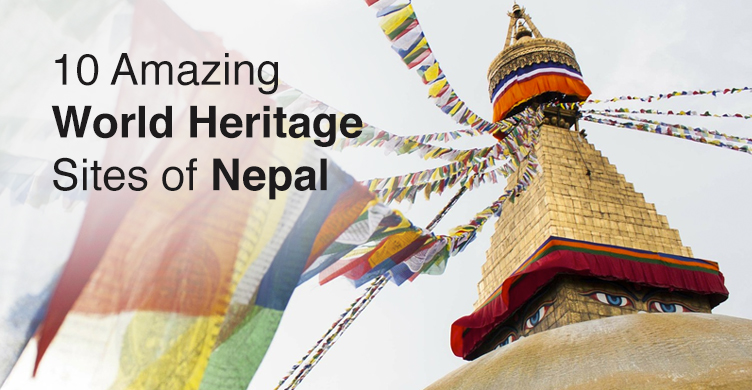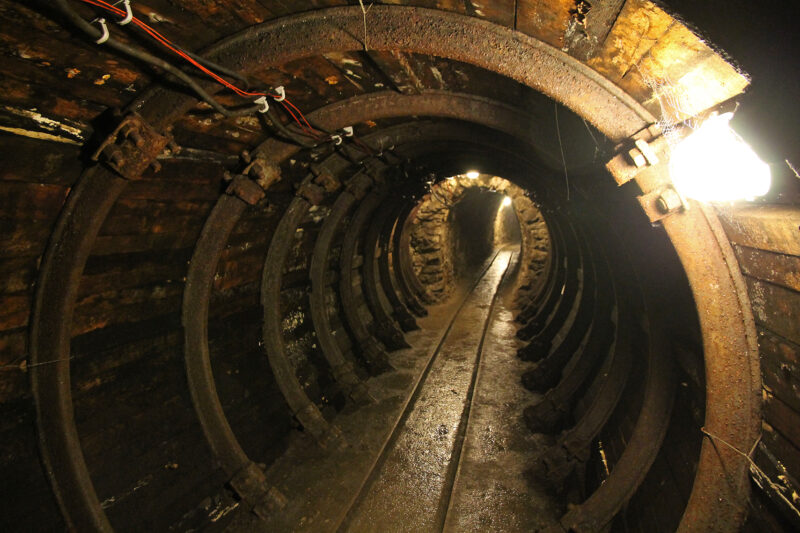Jerusalem is a very popular travel destination, and for very different reasons. This is a holy city for all three monotheistic religions, which means it attracts quite a lot of pilgrims from all over the world. But there’s more. With its almost 5000 years of history and a plethora of cultural influences, Jerusalem has become a vibrant melting pot ànd an important tourist magnet. The combination of pilgrims and tourists naturally results in large crowds inside the city’s narrow streets, especially near the religious/touristic places of (P)interest. Some people would call it a pleasant atmosphere, others would say it is too much. Whatever your personal opinion, you will have to deal with it if you want to discover one of the world’s most attractive cities.
Since we personally prefer to take in as many different impressions as possible and try to find a healthy balance between culture and nature, we decided to dedicate only one full day to Jerusalem, which obviously turned out to be insufficient. Annick had been here before, in 2007, and judging from her photos the weather was much better then. But even though it was a bit overcast, we knew this was going to be a unique experience.

After a nerve-wrecking adventure surviving the traffic in and around the city, we finally parked the car outside the city walls, passed the Jaffa Gate and went off to see a few of its highlights. In charge of the city map, Febe guided us through the narrow streets and so we eventually reached the Church of the Holy Sepulchre, known to contain both the holy site of the crucifixion (Golgotha) and Jesus’ empty grave. It took us (Maarten and Febe, since Annick already visited this church before) around an hour standing in line in a huge, nervous crowd to catch a short glimpse of the grave. I suppose it is something you have to do when you are in Jerusalem, since this is one of the most important touristic spots on earth, but it was definitely not worth the annoying wait with a 7-year old on your shoulders. Such sites should be better-managed to ensure that the experience is at least a pleasant (and longer) one for the visitors. A bit of a disappointment, but definitely something to check off the bucket list. On the other hand, the church itself is definitely a beautiful one, both the facade and the interior, and definitely worth a visit! If you decide you want to visit the grave, we would advise to come to this church twice: a first time for the grave (which will take a while and you will be exhausted afterwards) and a second time to take in all the details of this beautiful place of worship. Don’t be alarmed when you see people throwing themselves on top of a stone near the entrance: this is the Stone of Unction, also known as the Stone of Anointing, the place where Jesus’ body was laid down after being removed from the crucifix and thus another important relic.
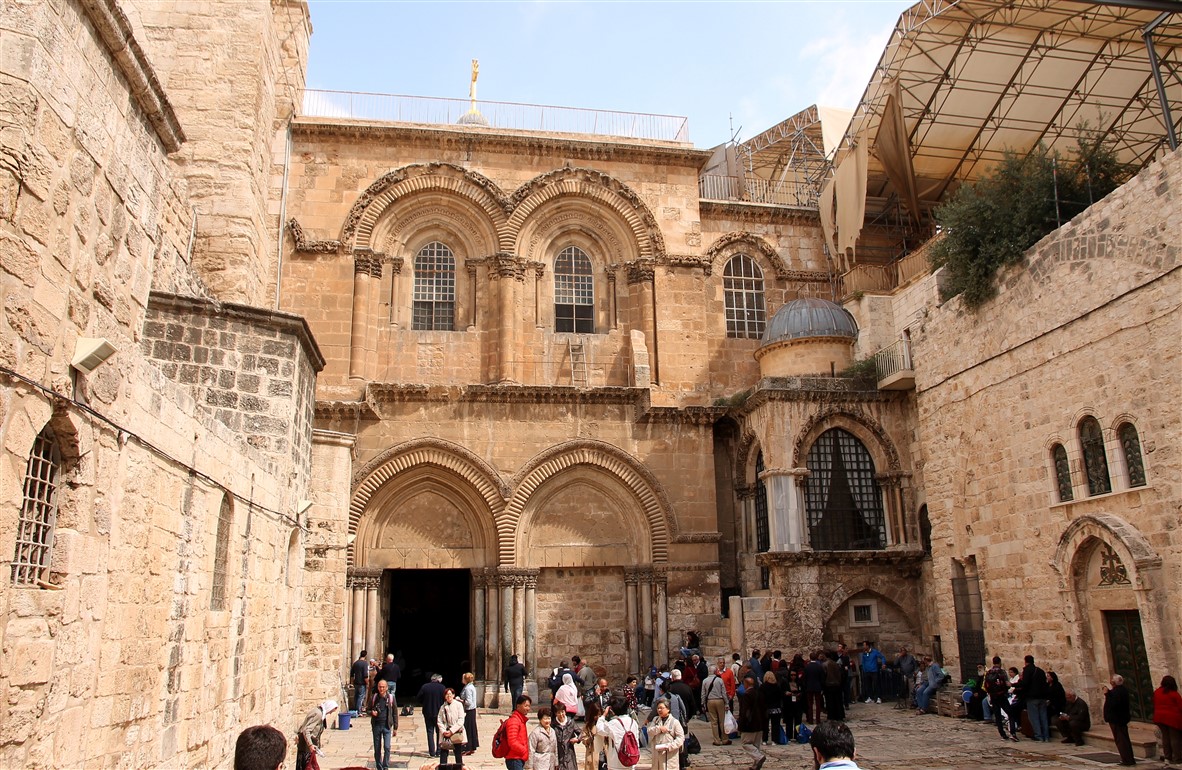
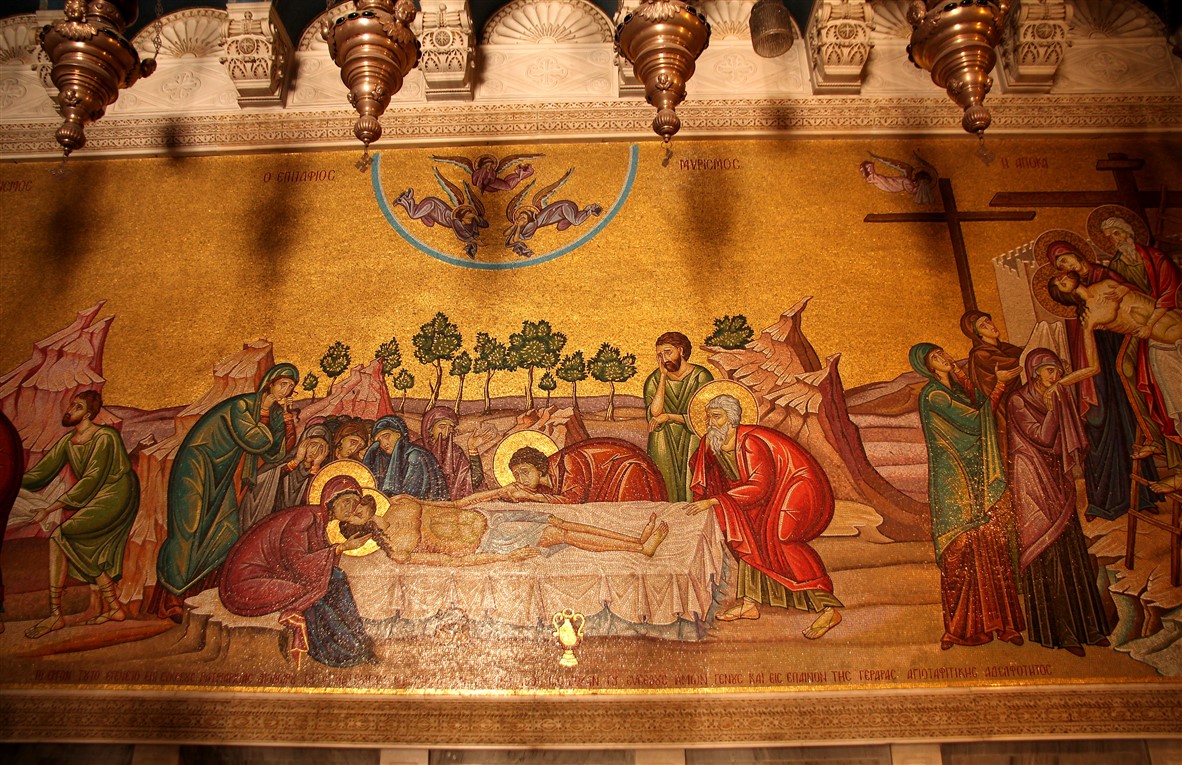
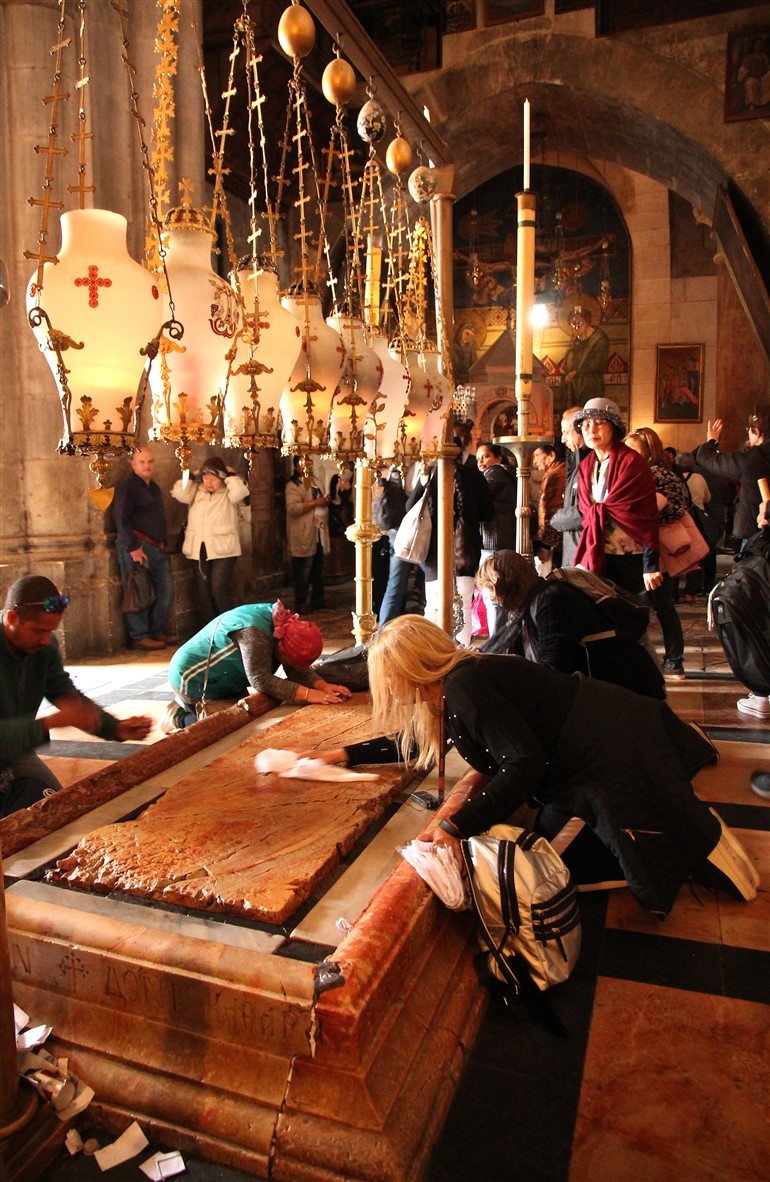
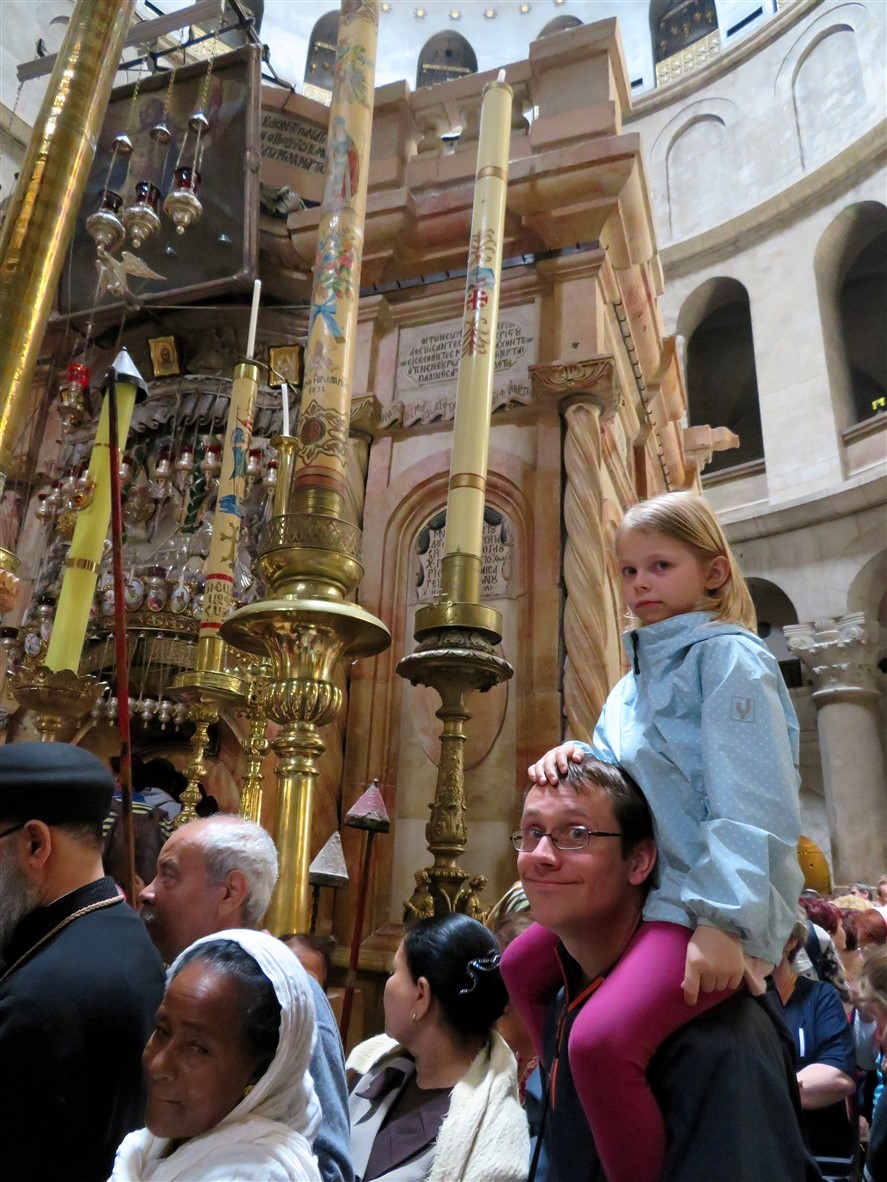
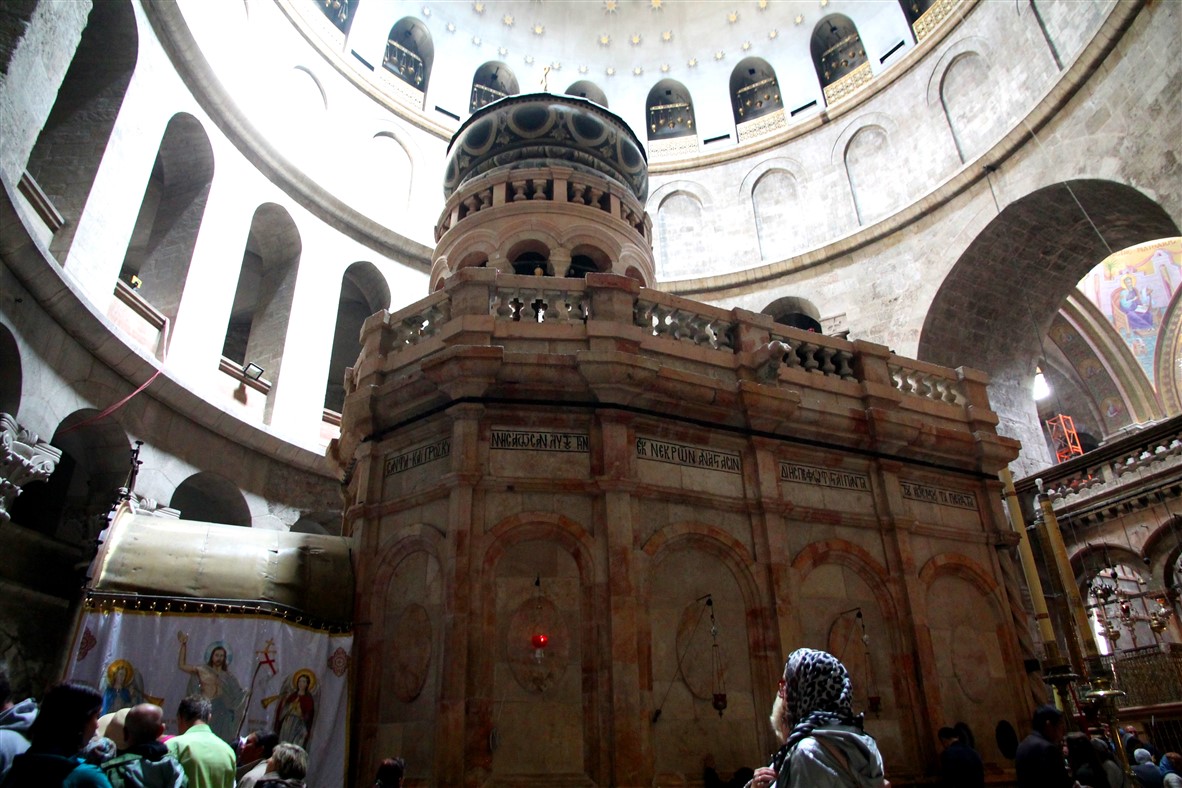
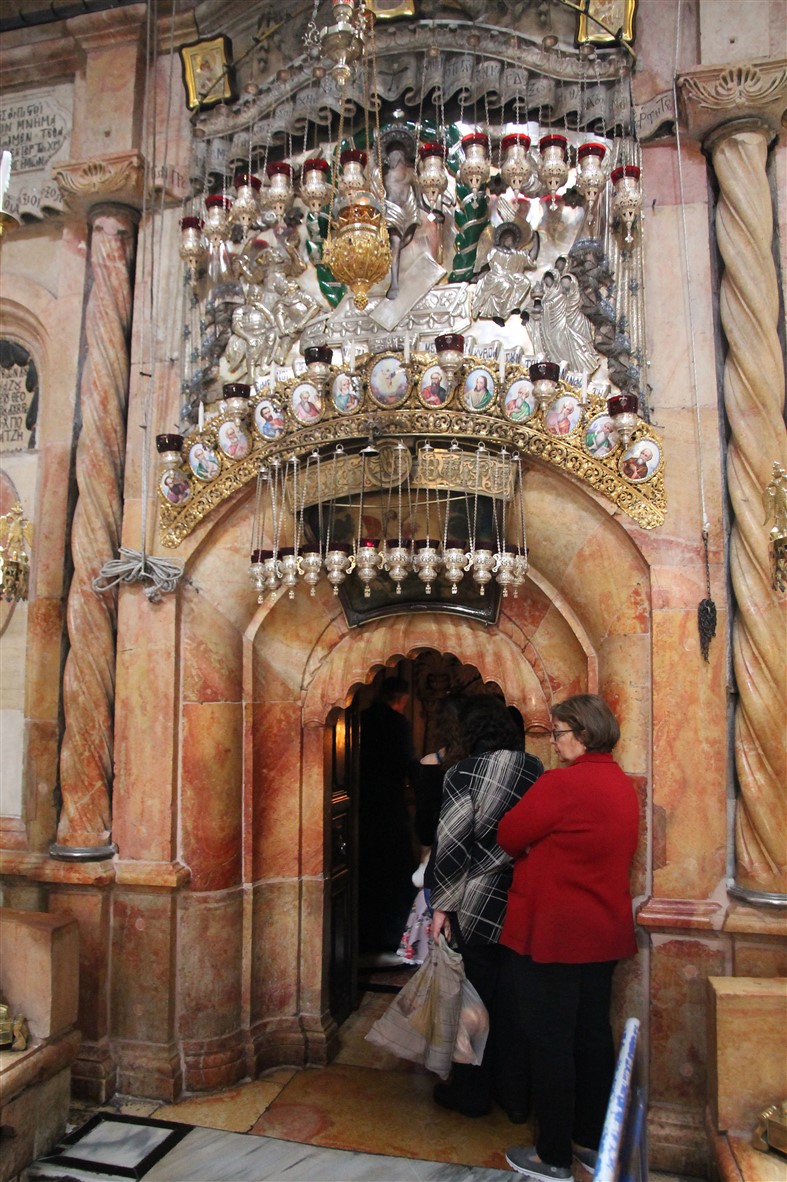
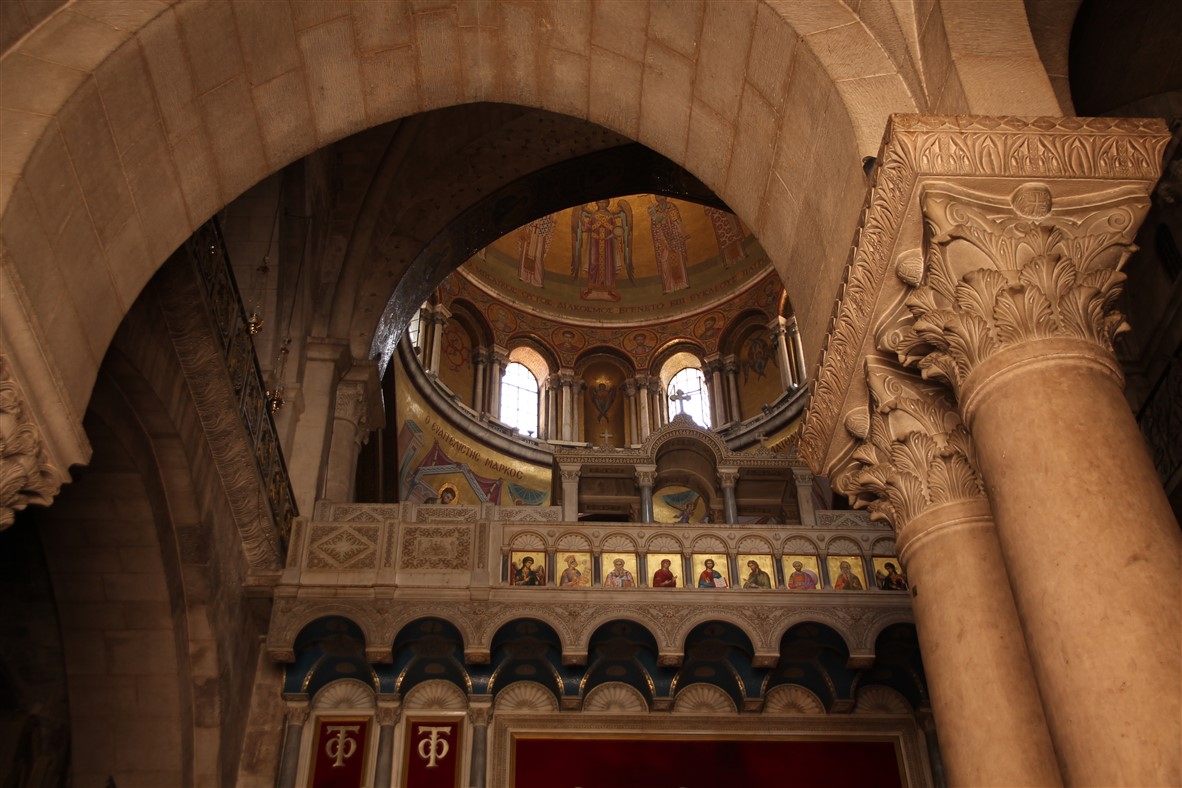
After leaving the Church of the Holy Sepulchre, we felt it was good to be back in the fresh air again, and we first walked up to the Protestant Church of the Redeemer and the adjacent Ayyubid Mosque of Omar. They are just two of the many churches, synagogues and mosques in the city, but all those towers with different shapes really make the Jerusalem “skyline” quite interesting and unique.
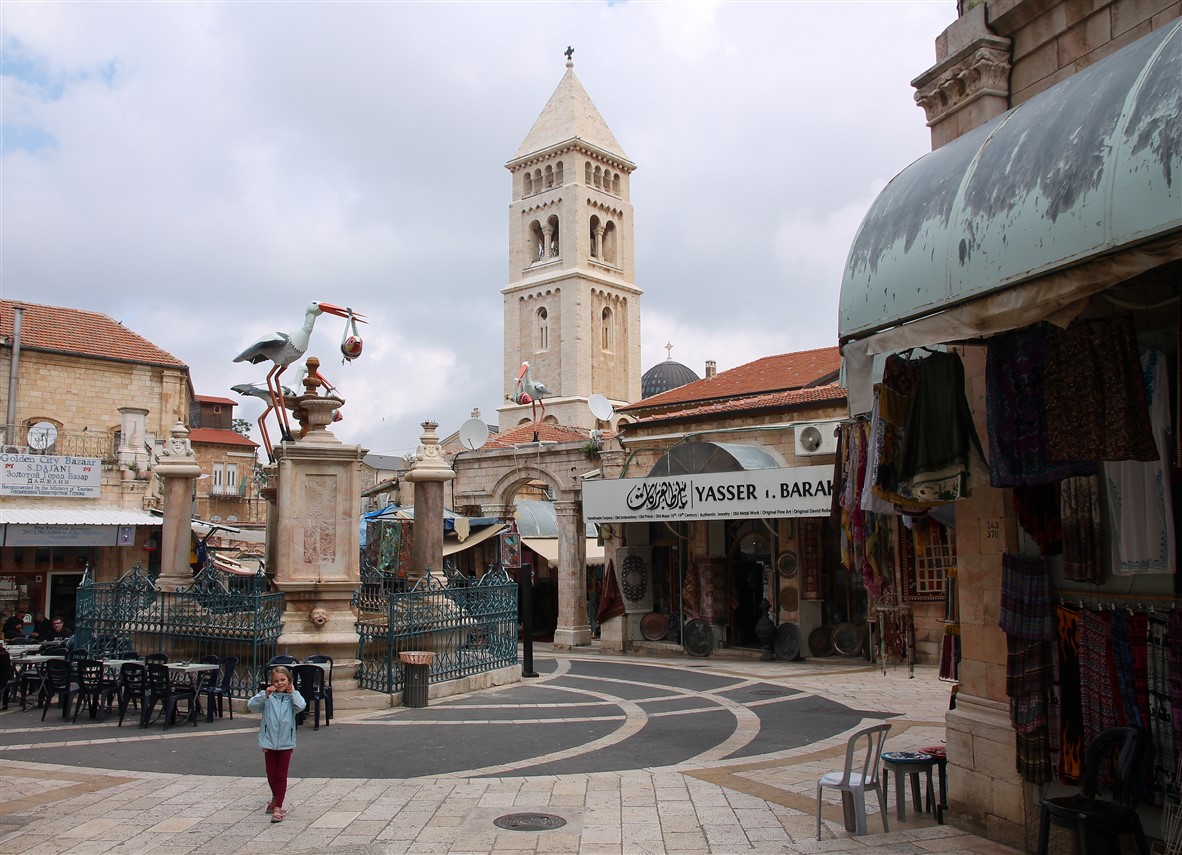
After a quick lunch, we set off again. In order to reach the Temple Mount from the Church of the Holy Sepulchre, we followed the souk-like Via Dolorosa, in commemorance of the suffering of Jesus on his way towards Golgotha (the current Church of the Holy Sepulchre), but nowadays lined with a multitude of tiny shops. Too busy for our taste, but rich in atmosphere. We did get lost finding the starting point of this street, but didn’t really mind, since we could explore the lesser visited parts of Jerusalem and escape the crowds. Street name plates come in three different languages here: an unexpected sign of co-existence in a country that is often portrayed as being intolerant.


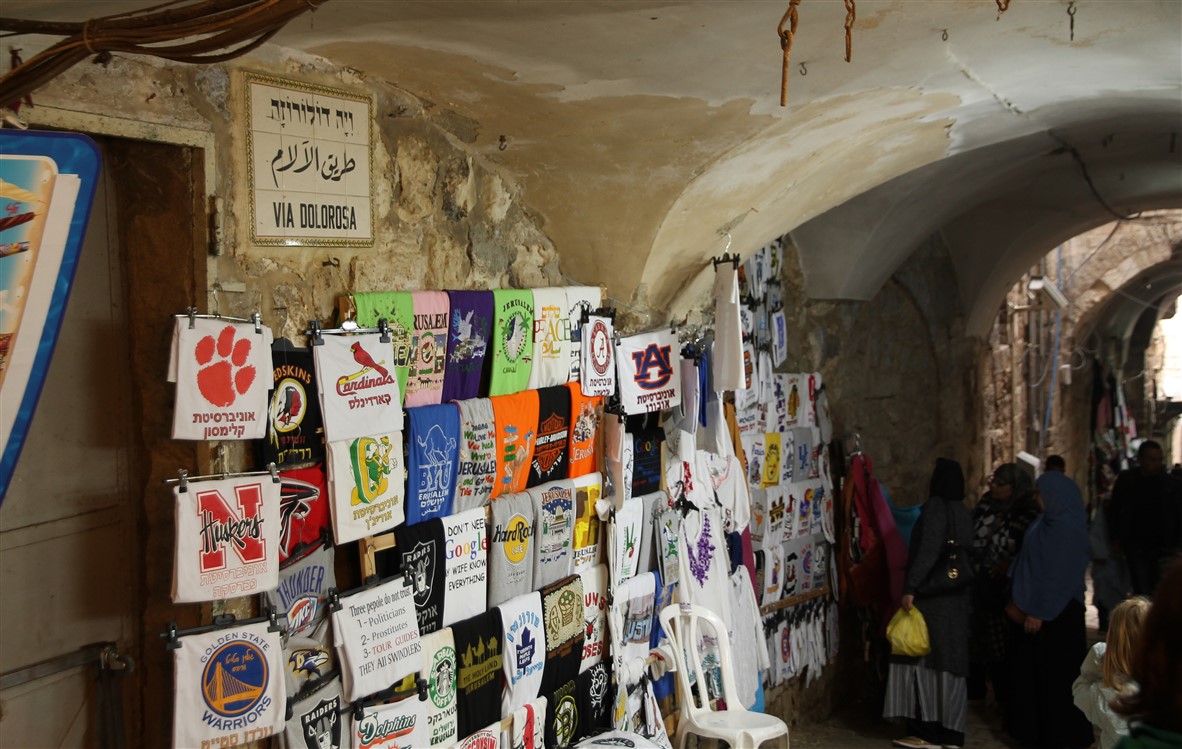
Finally, after a military checkpoint, we were allowed to go up to the plaza near the Western or Wailing Wall. It is part of the original Second Jewish Temple, built by Herod The Great in the first century BCE against the Temple Mount. The Western Wall is considered holy due to its connection to this Temple Mount, which is the holiest site in Jewish faith. However, due to the drastic entry restrictions to the Mount, the Wailing Wall has become the holiest place where Jews are permitted to pray. The part of the wall exclusive to men is strictly separated from the part restricted for women.
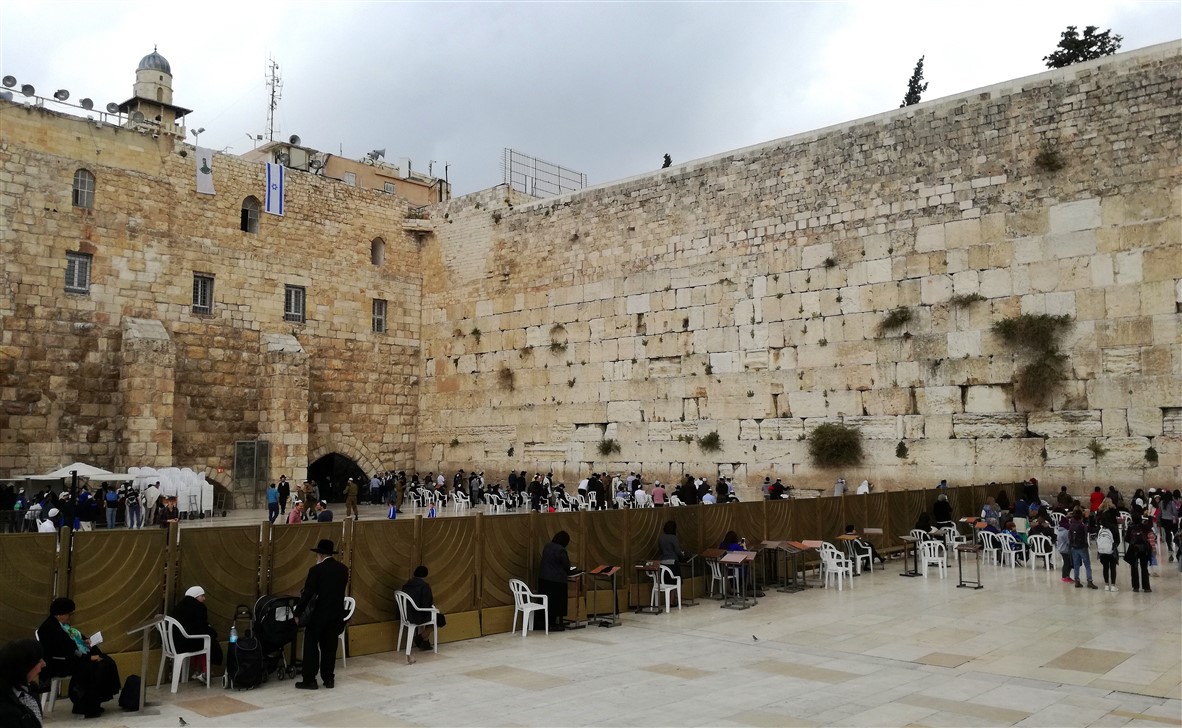
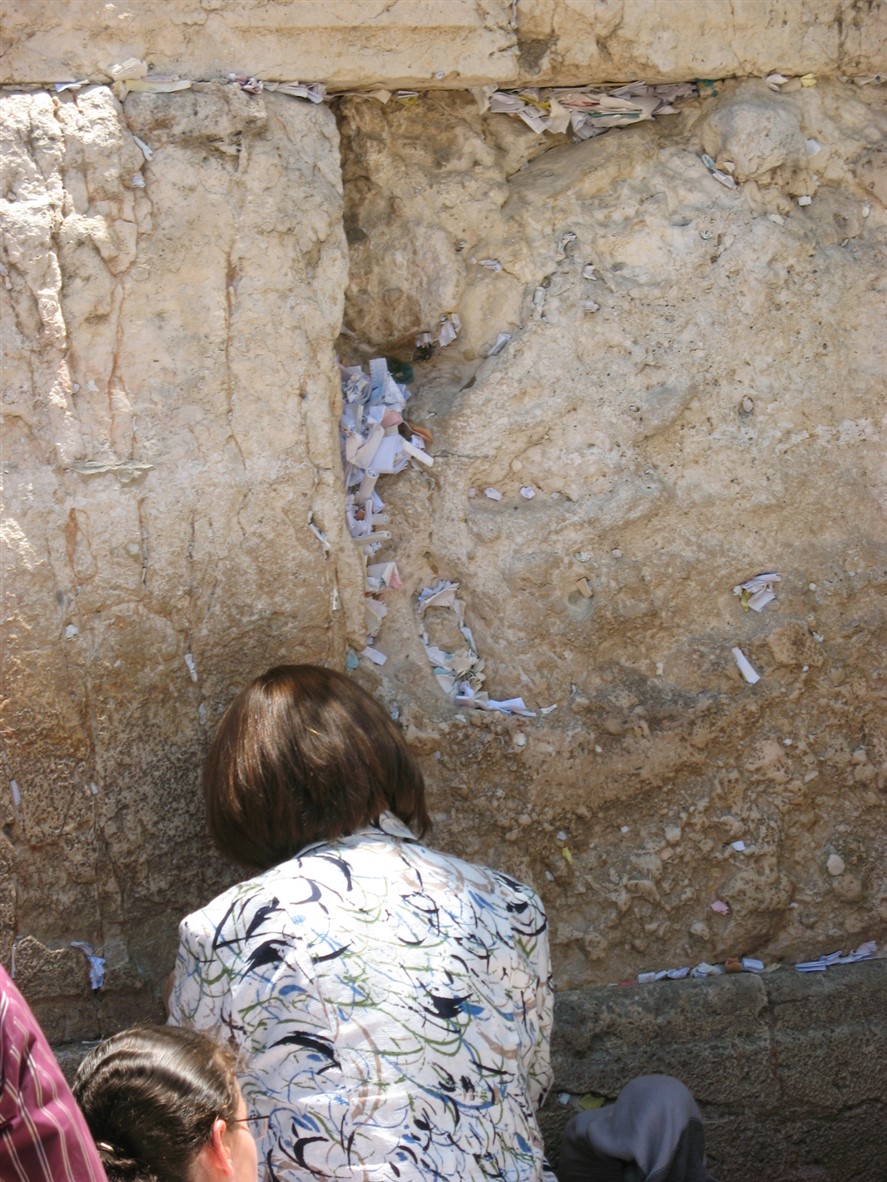
Another checkpoint (and a very strict one we must add: we were not even allowed to bring the candle we bought for Maarten’s parents to the Mount, even though it was well-hidden in our backpack. Regulations say: “No religious items on the Mount”) and a winding wooden bridge took us up to the Temple Mount. It was 2PM, but due to an Islamic holiday coming up the next days, the Mount was to be closed off for the public around 2.30PM. So we had half an hour for a quick glance up the mountain, before we were firmly asked to leave the site. We passed the impressive Al-Aqsa Mosque on the right (the third holiest site in Islam), and headed for the even more impressive Dome of the Rock with its golden roof and delicate mosaics. The latter shrine is one of the oldest examples of Islamic architeture in the world. Adjacent to the Dome of the Rock stands the blue Dome of the Chain, an old prayer house and even though it is literally in the shadow of the bigger dome, it struck me because of its elegant structure. For me, the beauty of the Temple Mount lies not only in the extravangance of the Dome of the Rock, but more in the combination with the smaller structures on top of the mount. And the view on Jerusalem!

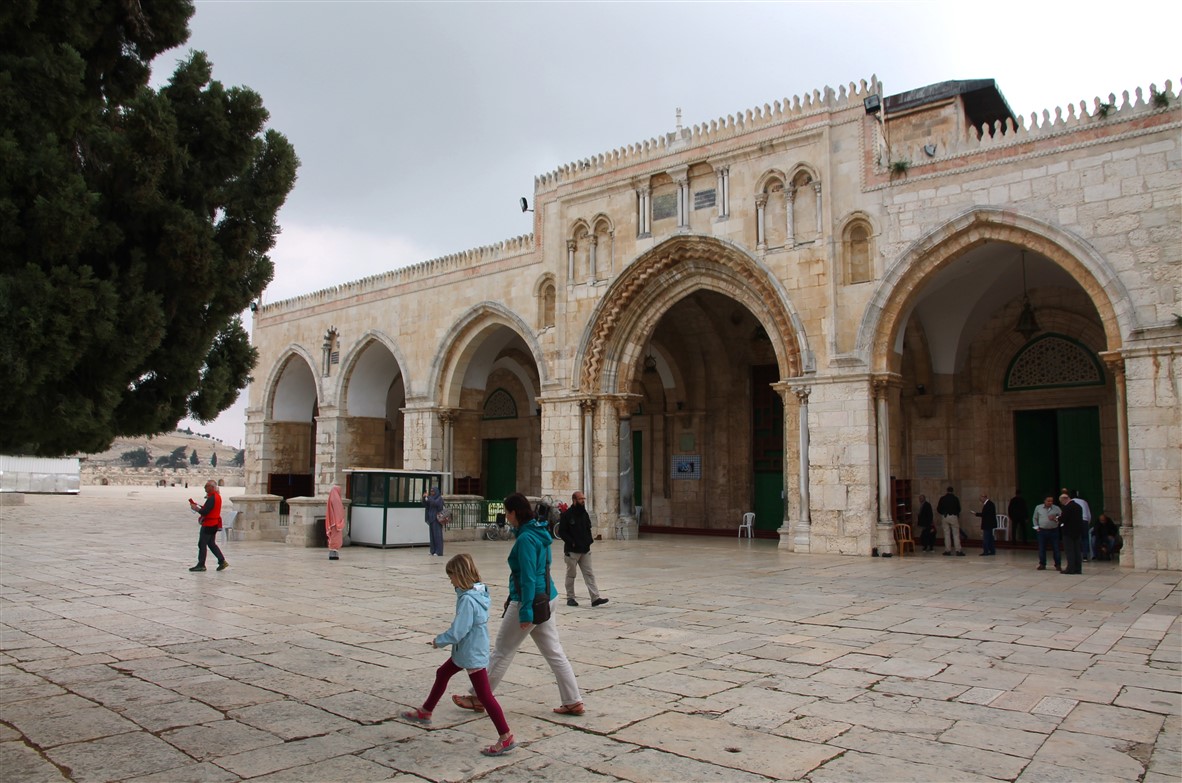

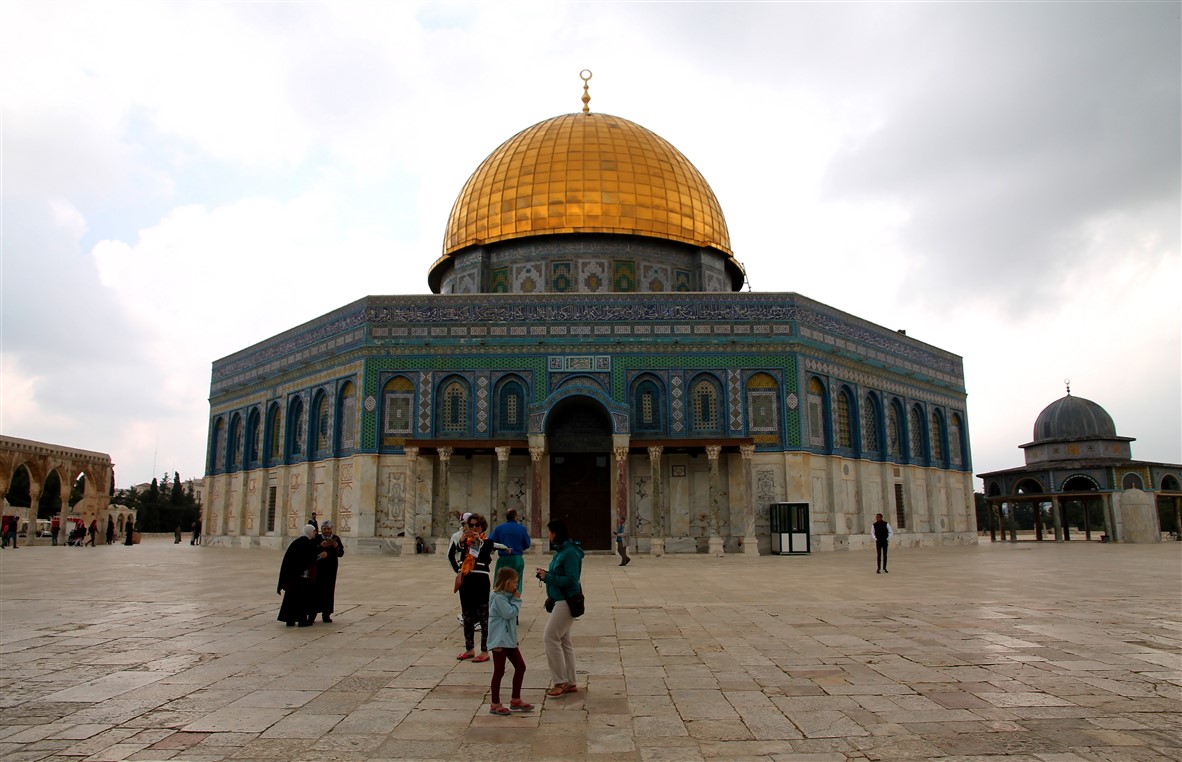
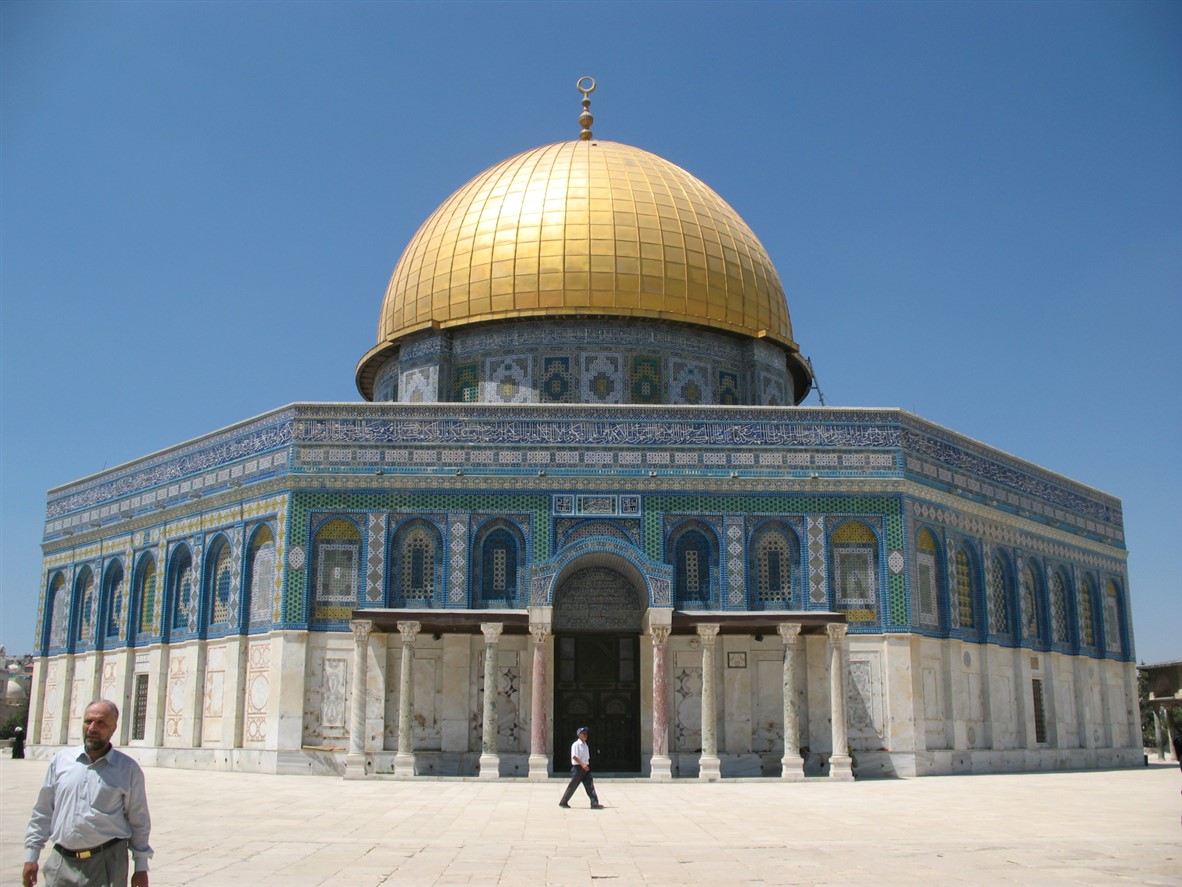
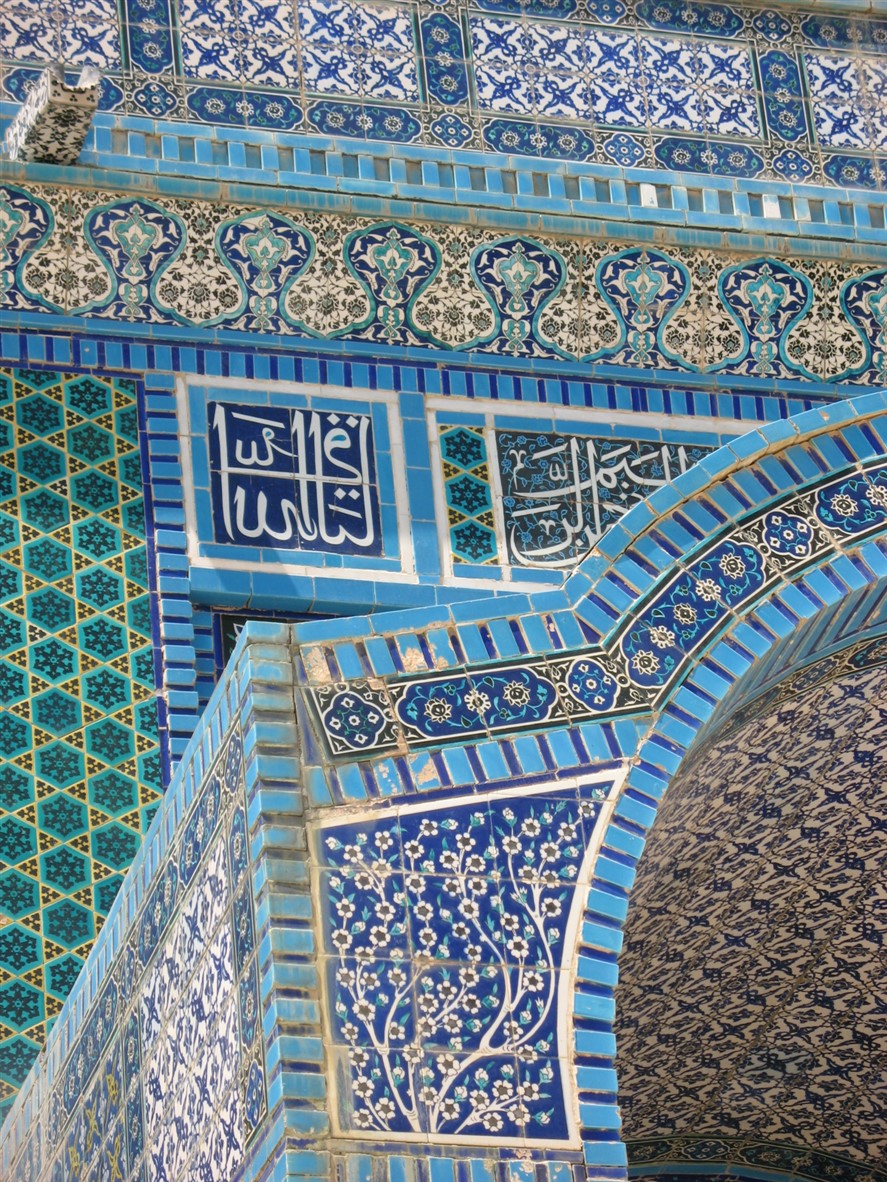
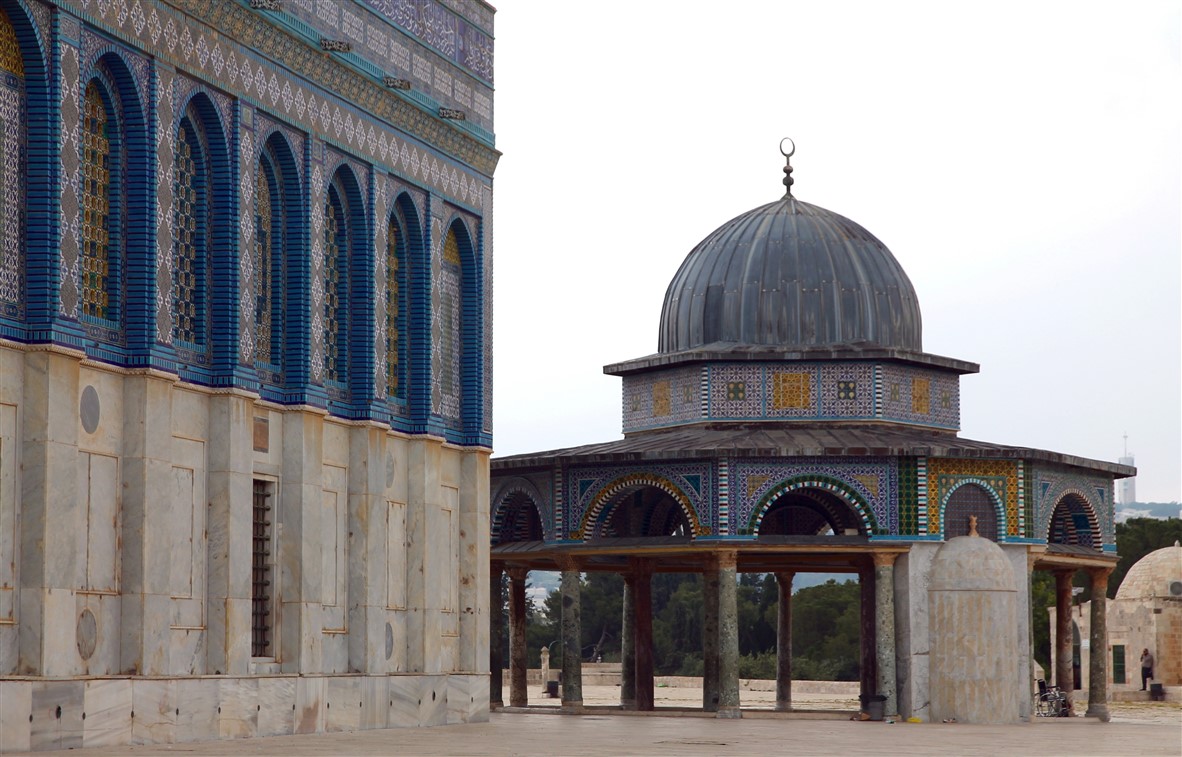
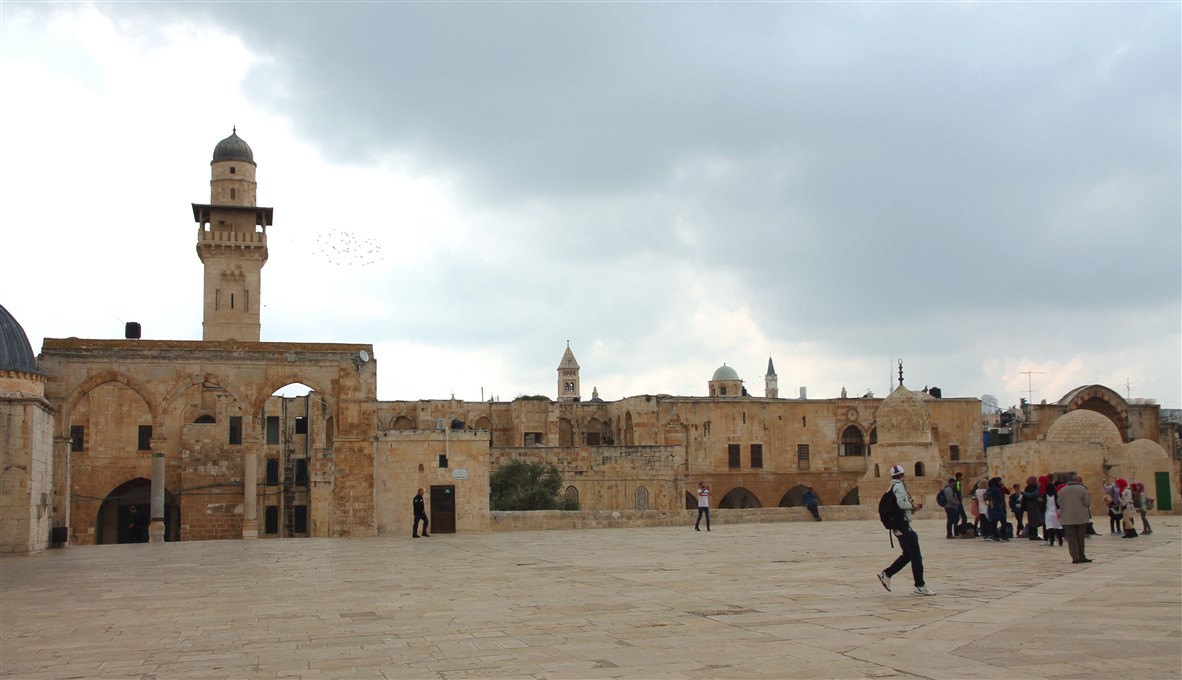
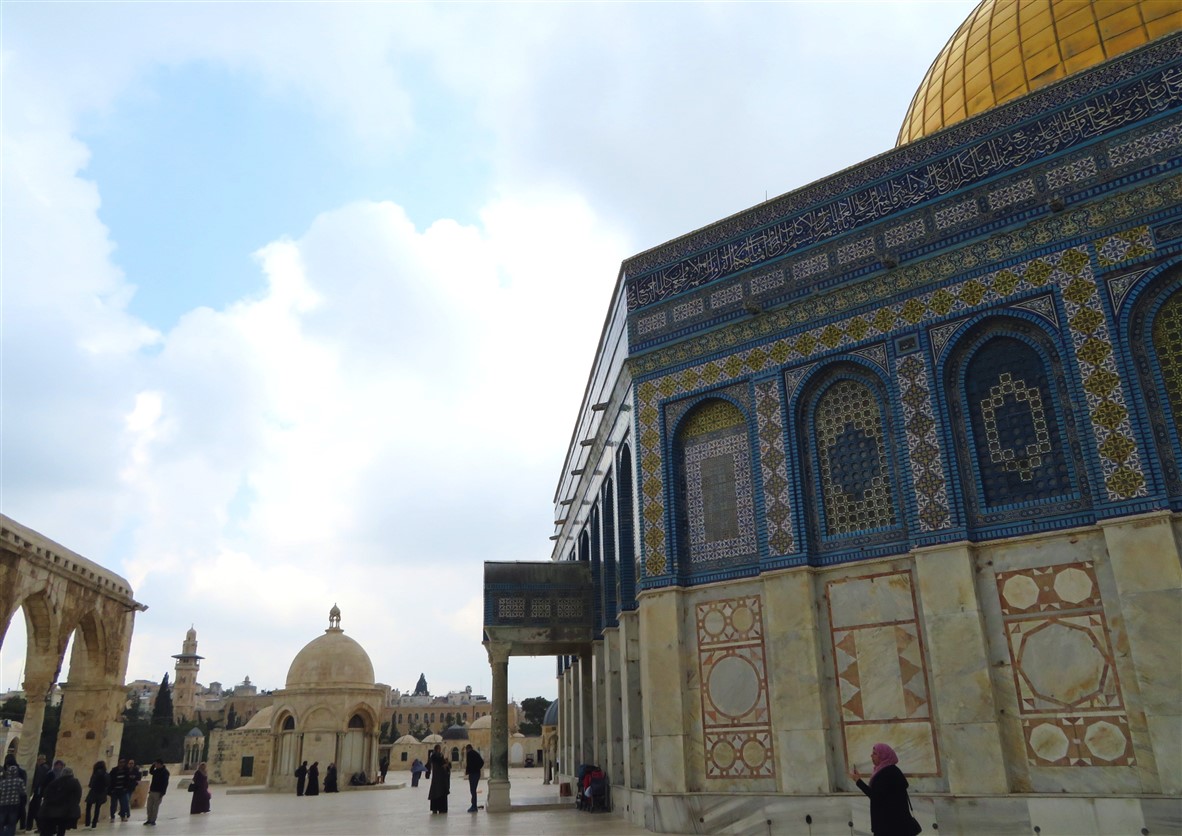
With all that glamour and so much different impressions in one day, we decided to let it all sink in and head back to the Jaffa Gate. We exited the city through the Dung Gate, where we had a nice view on the Mount of Olives, an impressive Jewish cemetery and another important biblical site. We then followed the city walls up to the Jaffa Gate and said goodbye to Jerusalem.
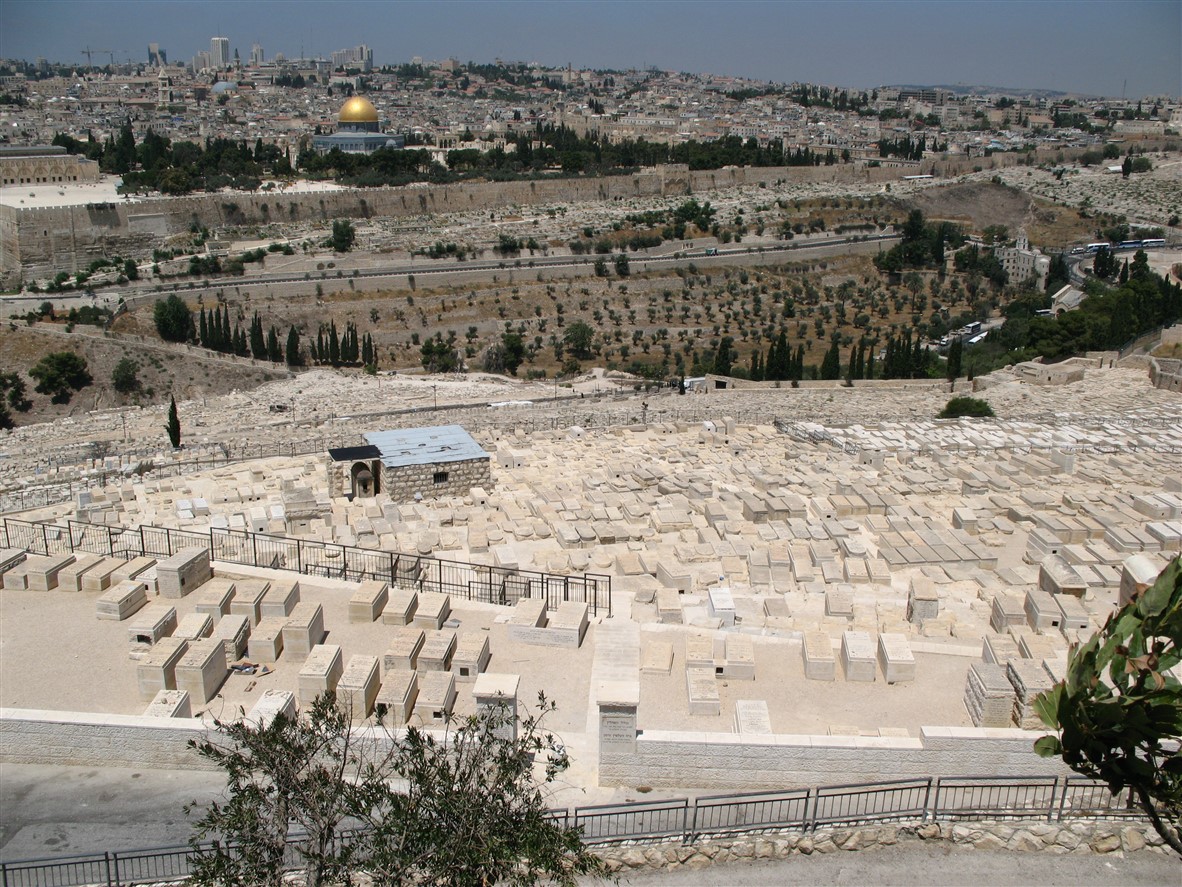
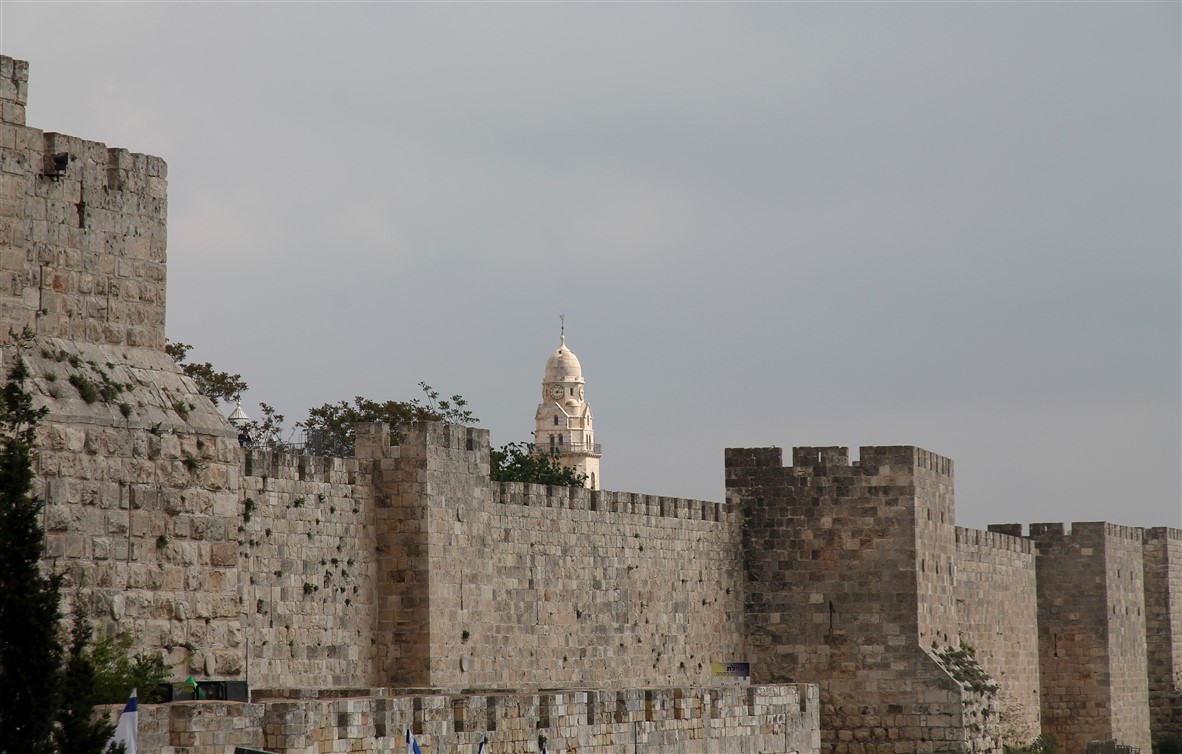
Conclusion: one day in Jerusalem is not enough to get an idea of all the beauty it contains, but it definitely left quite an impression. If we ever come back, we might focus more on lesser known sites (e.g. on the Mount of Olives), away from the busy centre.
One last tip: after leaving Jerusalem we drove to the beach for an evening stroll in tranquility. Highly recommended!
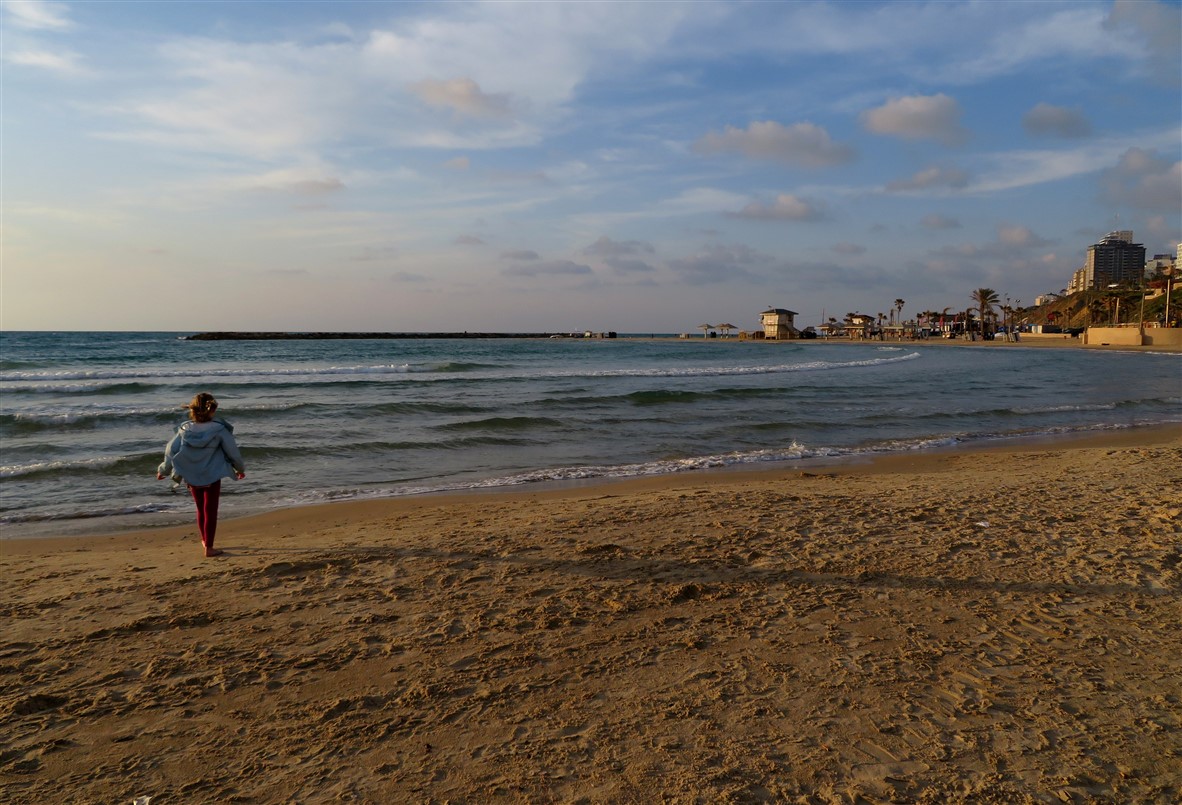
Old City of Jerusalem and its Walls (nr. 148)
Jerusalem is a holy city for Judaism, Christianity and Islam. The most important spots are the Temple Mount with the Dome of the Rock, considered to be the site of Abraham’s sacrifice, the Wailing Wall, a place of prayer for Jews and the Church of the Holy Sepulchre with the tomb of Jesus and the exact location of Golgotha.



